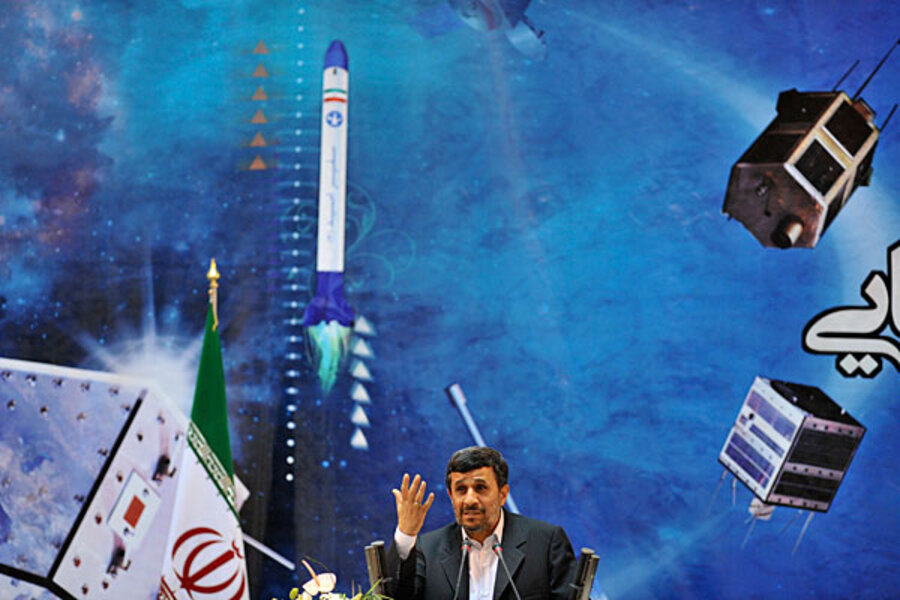Reports: Iran successfully launches small Earth-watching satellite
Iran launched a small Earth-observing satellite into orbit today (Feb. 3), marking the country's first successful mission since a failed attempt to put a monkey in space last year, according to state news reports.
The Iranian Space Agency launched the new "Promise of Science and Industry" satellite into orbit today using a Safir 1-B rocket, according to a translation of a statement posted to the agency's Farsi-language website. Safir means "Ambassador" in Farsi.
The new Iranian satellite weighs about 110 pounds (50 kilograms) and was built by students at the Sharif University of Technology, according to a report by Iran's Islamic Republic News Agency.
According to the Iranian Space Agency, the satellite is shaped like a cube that is nearly 20 inches (50 centimeters) wide. It is circling Earth in an elliptical orbit and passes over Iran six times a day. The satellite will fly a two-month mission and is controlled via five ground stations, one each in the cities of Karaj, Tabriz, Qeshm, Bushehr and Mashhad, Iranian space officials said.
Iranian defense minister General Ahmad Vahidi hailed the launch as a huge achievement for Iran's space technology effort, the news agency reported. "Promise of Science and Industry" will be used by researchers to study Earth's weather systems and manage responses to natural disasters, according to the IRNA.
The new satellite launch follows Iran's failed attempt to launch a live monkey into space in September 2011. That mission used Iran's Kavoshgar-5 rocket (Kavoshgar means "Explorer" in Farsi).
Prior to the failed monkey spaceflight, Iran had made progress in spaceflight technology. A June 2011 Safir rocket launch sent the Rasad-1 (Observation 1) satellite into orbit on an Earth-mapping mission. The country launched a Kavoshagar-3 rocket in 2010 that sent a rat, two turtles and a worm into space.
Iran launched its first domestically built satellite into space in February 2009.
The Iranian space program has drawn some concern from other space powers and nations because of the potential forIran's space launch vehicles to be used as weapons — potential carriers for ballistic nuclear missiles. Iran, however, has denied any military motives for its space program.
Iranian Space Agency officials have said in the past that they are aiming to launch a human into space by 2020 and land an astronaut on the moon by 2025.
Follow SPACE.com for the latest in space science and exploration news on Twitter @Spacedotcom and on Facebook.





